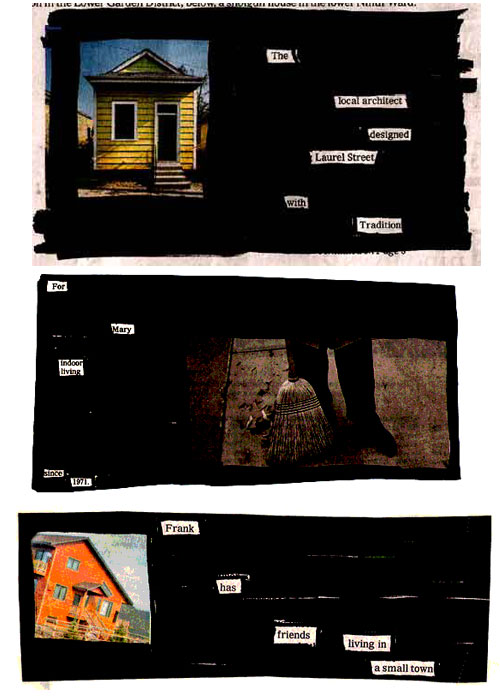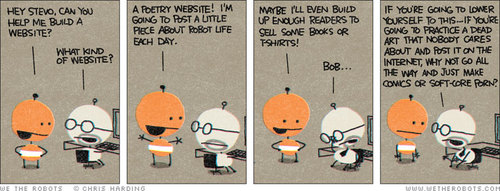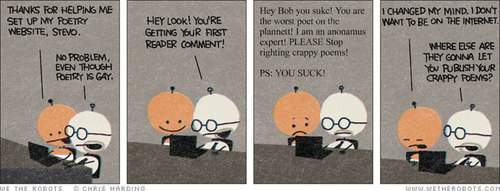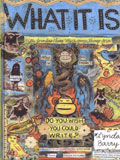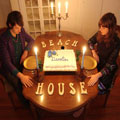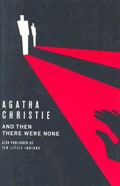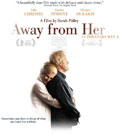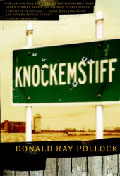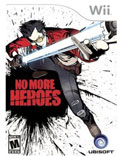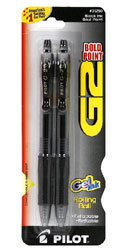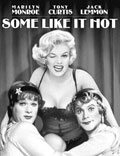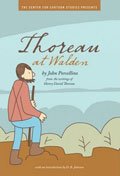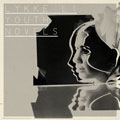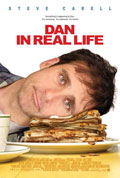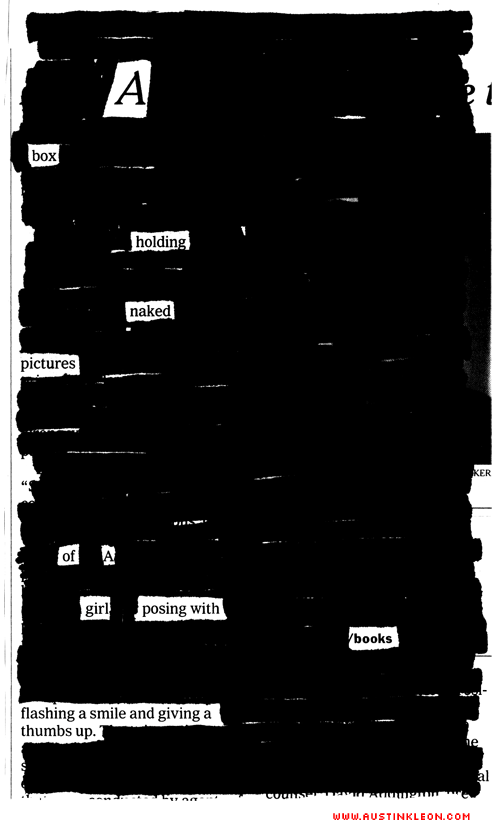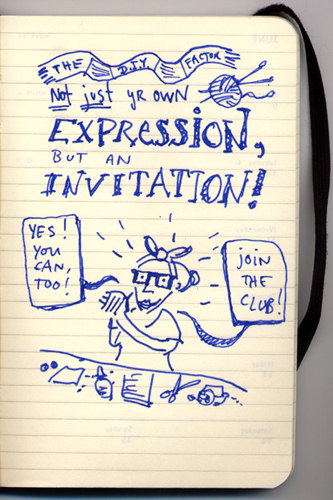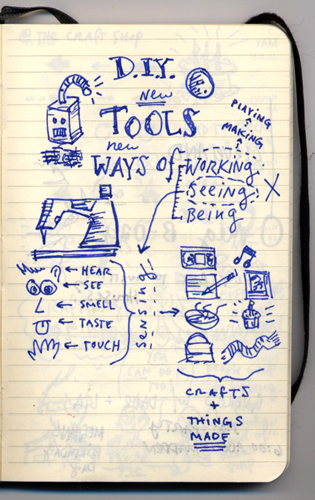It seems to me that the language of poetry is very dependant on setting up images and juxtaposing them against each other. A poet will create an image in the first two lines of his poem and then he will create another in the next two lines, and so on. I do find this jumping from image to image in poetry to be a very interesting, comic-like element. Many poems are almost like word comics.—The cartoonist Seth on poetry and comics
I don’t know if I’ve mentioned this recently, but in the beginning, I called my poems “Newspaper Blackout Comics.” The first batch I ever did explicitly juxtaposed image and text:
Other examples: here and here.
My old creative writing teacher used to tell me that a poet “thinks in images” and a fiction writer thinks in terms of “character and plot.” I’m not sure it’s that cut and dry, but I think it sheds a lot of light on why I find traditional prose fiction so incredibly hard, and poetry and comics so incredibly fun.
And speaking of poetry and comics, one of the main characters in Chris Harding’s excellent WE THE ROBOTS webcomic has started a poetry website:
So hilarious, and so true. Be sure to visit his site for even more.
And speaking of mean comments, here’s a new phenomenon for me: mean-spirited spam.

As if it wasn’t hard enough for me to get up in the morning!
